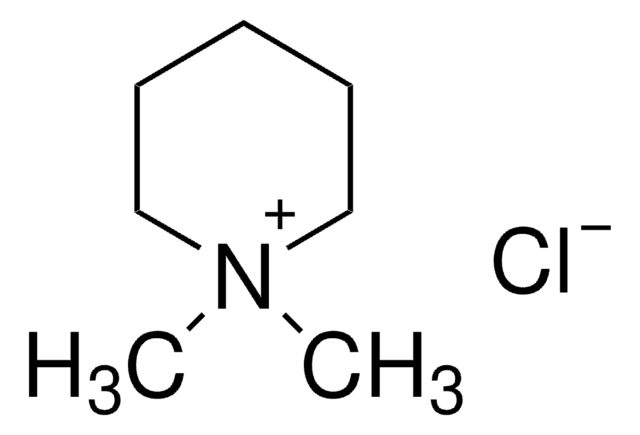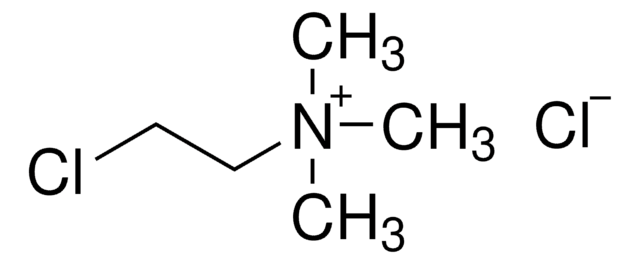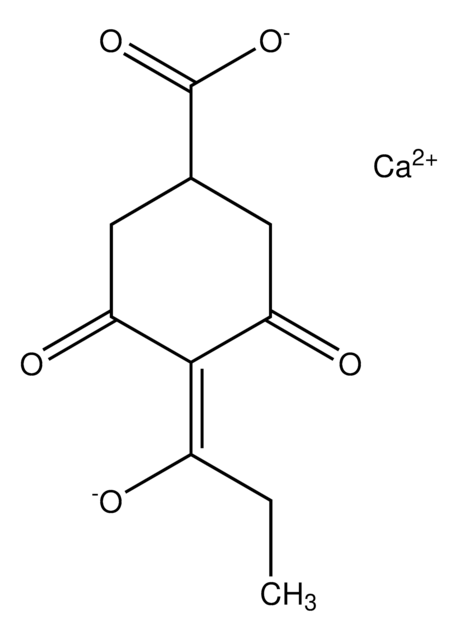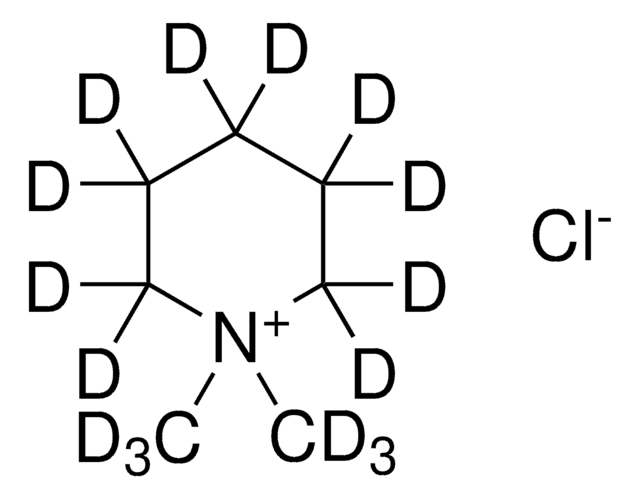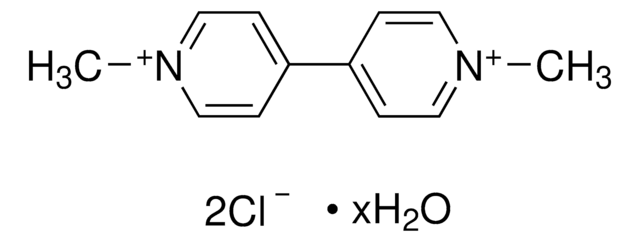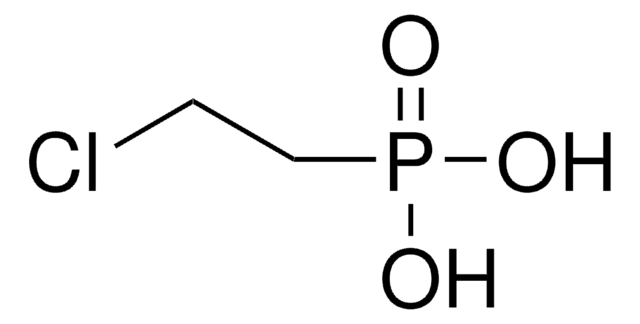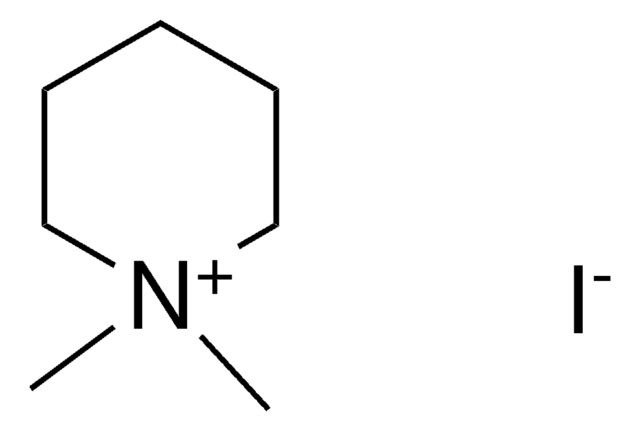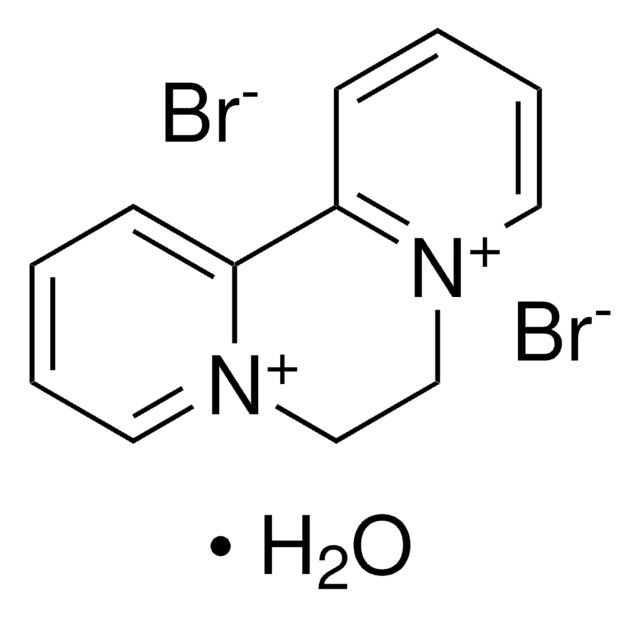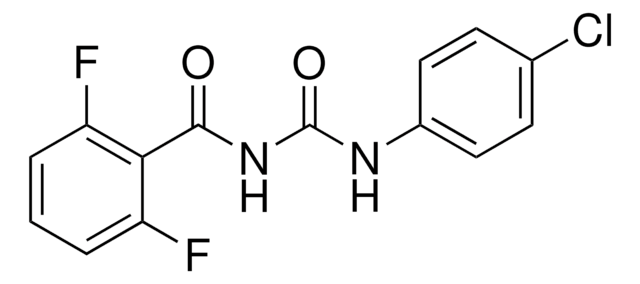38117
Mepiquat chloride
certified reference material, TraceCERT®, Manufactured by: Sigma-Aldrich Production GmbH, Switzerland
Synonym(s):
1,1-Dimethylpiperidinium chloride
About This Item
Recommended Products
grade
certified reference material
TraceCERT®
Quality Level
product line
TraceCERT®
shelf life
limited shelf life, expiry date on the label
manufacturer/tradename
Manufactured by: Sigma-Aldrich Production GmbH, Switzerland
storage temp.
2-8°C
SMILES string
[Cl-].C[N+]1(C)CCCCC1
InChI
1S/C7H16N.ClH/c1-8(2)6-4-3-5-7-8;/h3-7H2,1-2H3;1H/q+1;/p-1
InChI key
VHOVSQVSAAQANU-UHFFFAOYSA-M
Looking for similar products? Visit Product Comparison Guide
Related Categories
General description
Mepiquat chloride is a synthetic plant growth regulator that is absorbed by the foliage and translocated throughout the plant. It is widely used to manipulate plant structure and helps to combat excessive vegetative growth, which if left uncontrolled can lead to undesirable fruit shed, boll rot, and yield reductions. Mepiquat chloride inhibits gibberellic acid synthesis, thus reducing cell enlargement and cell division rate. Application of mepiquat chloride in cotton results in a more compact plant caused by shortened internode elongation, reduced main stem nodes and decreased leaf expansion and leaf area.
Mepiquat chloride is approved for use in European Union (EU) following Regulation (EC) No 1107/2009 (repealing Directive 91/414/EEC). The maximum residue level (MRL) for Mepiquat (sum of mepiquat and its salts, expressed as mepiquat chloride) is established from 0.02 mg/kg to 4 mg/kg for many plant-based products and 40 mg/kg for linseed, mustard, sunflower, and poppy seeds. For products of animal origin, the MRL is set from 0.05 mg/kg to 0.8 mg/kg as per Reg. (EU) 2021/976.
Mepiquat has to be monitored in the Multiannual Control Programme for Pesticides Residues (MACP), run within the EU and EFTA in/on products of plant origin.
Application
- Evaluate the influence of plant density on cotton response to mepiquat chloride application in order to isolate a specific combination for optimizing plant stature and yield
- Quantify the growth and physiological responses of cotton plants to temperature regimes and mepiquat chloride rates
- Quantify the efficacy of mepiquat chloride on plant height, culm morphological characteristics, lignin accumulation, related enzyme activities, and its relationship with lodging resistance in maize
- Evaluate the roles of gibberellic acid metabolism and signaling in mepiquat chloride-induced inhibition of internode elongation in cotton seedlings
- Evaluate the effects of different mepiquat chloride concentrations on morphological and physiological changes in Eucalyptus clones
Recommended products
Legal Information
signalword
Warning
hcodes
Hazard Classifications
Acute Tox. 4 Oral - Aquatic Chronic 3
wgk_germany
WGK 2
flash_point_f
Not applicable
flash_point_c
Not applicable
Certificates of Analysis (COA)
Search for Certificates of Analysis (COA) by entering the products Lot/Batch Number. Lot and Batch Numbers can be found on a product’s label following the words ‘Lot’ or ‘Batch’.
Already Own This Product?
Find documentation for the products that you have recently purchased in the Document Library.
Our team of scientists has experience in all areas of research including Life Science, Material Science, Chemical Synthesis, Chromatography, Analytical and many others.
Contact Technical Service